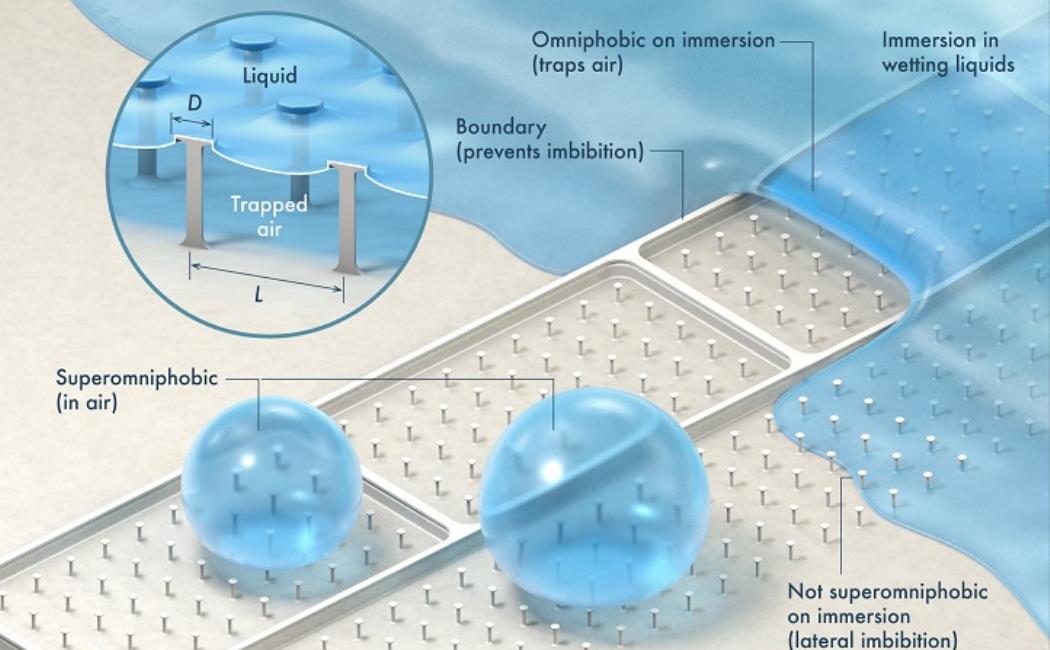
Surface science concepts are up for revision
19 November, 2018
The textbook directions for characterizing the wetting properties of solid surfaces are likely to change as KAUST researchers demonstrate that conventional tests can be misleading.
Current go-to methods to determine surface wetting characteristics rely on measuring contact angles, whereby images of advancing and retracting droplets dispensed by capillaries onto surfaces are analyzed to estimate angles at solid-liquid-vapor interfaces.
A contact angle exceeding 90 degrees for water- or oil-based droplets indicates surfaces are hydrophobic (water repelling) or oleophobic (resistant to oil). Therefore, surfaces that meet this criterion for both water and oils are defined as omniphobic. High contact angles also ensure that, when immersed in liquids, surfaces entrap air, which is crucial for applications, such as desalination, drag reduction in transport pipes and antifouling materials for ships.
Click here to read the full story
Image: Liquid droplets occupy a limited spot on the microtextured surface, consistent with omniphobicity. However, when immersion, the liquid can access the entire surface from the sides and at localized defects, which causes immediate submersion.
Reproduced with permission from reference one © 2018 Elsevier; Xavier Pita